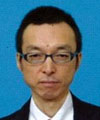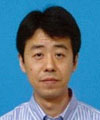 |
|||||||||||||
|
|
|||||||||||||
|
Feature Articles: Wireless Access Technologies that Enhance Convenience by Network Linkage Vol. 11, No. 3, pp. 6–10, Mar. 2013. https://doi.org/10.53829/ntr201303fa1 Current Status, Issues, and Future Perspective of Wireless Home NetworksAbstractWireless access is now widely available in home networks. This allows network access from anywhere in the home. When wireless home networks become more secure and reliable and can be deployed more easily, more people will be able to use home network services. This article explains the current status and issues of home networks. It also introduces the concept of a user-centric wireless home network that is under development at NTT Network Innovation Laboratories. 1. IntroductionMore and more people have started using wireless access at home in recent years. The changes in the way home networking is used are the backdrop of this trend. As shown in Fig. 1, at the beginning of the Internet era in the early 1990s, the only networked device was the desktop personal computer (PC), and few people were using the Internet at home. In contrast, optical broadband network access has now penetrated the entire country, and various network devices, e.g., smart phones, tablets, gaming machines, and PC peripheral devices, are now used at home. In addition, people are using home networks in various ways, e.g., data communication using the Internet, sound communication using a wireless headset and wireless microphone, and communication with sensing devices. This change has been possible because of the introduction of various wireless systems as shown in Fig. 2. There are three major wireless access systems: (1) wireless local area networks (LANs), used for Internet access [1], (2) Bluetooth, used for wireless headsets and healthcare appliances, and (3) ZigBee, used for communication with sensing devices for network services such as visualizing the power consumption of home appliances.
Most smartphones and tablets now use wireless LANs. In home networks, they are mainly used for data communications. The current wireless LAN standards are IEEE 802.11b/g for the 2.4-GHz band, IEEE 802.11a for the 5-GHz band, and IEEE 802.11n for the 2.4/5-GHz band. The next standards, i.e., IEEE 802.11ac and IEEE 802.11ad, are currently under development and will apply to gigabit throughput. Draft documents have already been issued, and procedures are being developed to complete the standard. Wireless LANs based on the IEEE 802.11ac draft are expected to be available by April or May of 2013. Wireless broadband access will undoubtedly become more common after the launch of the IEEE 802.11ac standard. Bluetooth has also become a popular wireless system. It uses the 2.4-GHz band and is based on the IEEE 802.15.1 standard, which targets wireless personal area networks (PANs) whose service area is smaller than that of a wireless LAN. In 2009, Bluetooth 4.0 was developed with reduced power consumption, and various mobile devices started deploying Bluetooth. It is mainly used for voice communications or music appliances such as wireless headsets and wireless mikes. It is expected to be applied to various appliances in the near future, and larger numbers of Bluetooth-enabled products are predicted to be shipped. A machine-to-machine (M2M) network is also considered to be an affordable wireless system that can connect not only high-end smart devices but also anything in the home to the network. ZigBee, which is a sensor network system based on the IEEE 802.15.4 standard, is available for use in home network services. IEEE 802.11ah is also under development to support M2M communication in the 920-MHz band. However, some issues have arisen in the aforementioned evolution of wireless networks that must be addressed to further evolve wireless home networks. These issues are described in detail in the next section. 2. Issues in wireless home networksThere are three key issues regarding home networks: (1) providing support for a wider variety of wireless systems, (2) preventing interference and improving actual throughput, and (3) simplifying the setting and certification procedure. These issues are explained below. (1) Providing support for a wider variety of wireless systems: Each wireless standard has been optimized for a specific purpose. These standards have been amended in order to enhance performance by incorporating the latest technologies. Although this has expanded the application area of wireless systems, there are still too many wireless standards, and it is difficult for users to select the most appropriate wireless system. It is necessary to develop a wireless home network platform that supports various standards. This will allow users to buy what they want without worrying about connectivity to their own home network. (2) Preventing interference and improving actual throughput: Wireless systems in home networks use unlicensed frequency bands where multiple wireless systems may coexist. The possibility of the coexistence of other wireless systems was low just a few years ago because of the low deployment rate. However, the recent proliferation of wireless systems has increased the possibility of coexistence, which will increase the rate of interference within the same system and between different systems. Interference degrades the actual system throughput, especially in high population zones such as train stations or urban areas. The use of the 5-GHz band is an effective solution to mitigate the influence of interference because most current wireless systems use the 2.4-GHz band. However, it is insufficient to handle the predicted increase in mobile traffic. Improving the spectral efficiency will be necessary to maintain high system throughput in high-density wireless system areas. (3) Simplifying the setting and certification procedure: When people start using a home network to communicate with things such as sensing devices, the number of wireless devices will drastically increase. The setting procedures may be very complex for users because they differ according to the wireless system. It is necessary to create a mechanism that does not require the user to implement any setting procedures. Thus, both the settings and the certification procedure will need to be simplified in future wireless access systems. When the above issues are resolved, users can deploy and extend their wireless home network without concerns for the security and reliability of the wireless network. The next section reviews the research and development (R&D) of the wireless home network underway at NTT Network Innovation Laboratories. 3. R&D of user-centric wireless home networkTo address the issues described in the previous section, NTT Network Innovation Laboratories is developing a user-centric wireless home network. Its key concepts are detailed below. The user-centric wireless home network allows people to use any applications and devices without concern for wireless connectivity. It enables users to: (1) select wireless devices without worrying about connectivity to their home network, (2) operate devices without having to set them first to avoid interference, and (3) carry out certification procedures with reduced complexity. These benefits are described in more detail as follows: (1) Wireless device selection without worrying about connectivity to their own home network: The user-centric wireless home network provides a platform that enables users to deploy arbitrary wireless systems for various purposes, e.g., the Internet for data communication, a wireless headset and mike for sound communication, and sensing devices for monitoring home equipment, without worrying about connectivity to their own home network. These features are enabled by the use of software technology for processing radio signals and by a flexible access point (AP), which supports a wide variety of wireless systems. Since the flexible AP can be used for new standards by updating the radio signal processing software at the network server, users do not need to buy new access points for new wireless devices. Thus, users can select their wireless devices without ever worrying about the connectivity. (2) No need to input settings or operations in devices to avoid interference Interference within the same system as well as between different systems can be suppressed by employing the wireless access platform where beam patterns and channels at multiple APs are coordinated and controlled over the network. Moreover, by adaptively changing beam patterns and channels according to the environment changes, spectrum resources can be effectively shared by multiple wireless systems. This increases the capacity per area even when multiple wireless systems coexist in the same area. Therefore, users need not worry about interference from other systems. (3) Simplified certification The certification procedure in the user-centric wireless home network is triggered by the network, whereas it is triggered by the network terminals in current general wireless systems. This new procedure reduces the complexity of certification, especially in M2M networks, where users do not directly operate the devices, and in short-range wireless access systems with very high throughput using millimeter-wave bands. The key technology to realize the user-centric wireless home network is the control of APs over the network with secure and reliable access. R&D is being conducted to implement the architecture of AP network control as shown in Fig. 3, where remotely controlled functions such as the certification and interference avoidance are handled by network control. The functions at the network control engine utilize the OSGi (Open Services Gateway initiative) technology of the next-generation home network platform [2].
The Feature Article in this issue entitled "Public Wi-Fi Services at NTT DOCOMO," [3] introduces the current services and development activities underway at NTT DOCOMO to improve the user experience for mobile users. The next three Articles introduce technologies that support the user-centric wireless home network. "High-speed Wireless LAN for Broadband Wireless Home Networks" [4] describes technology to manage interference while coordinating multiple APs. "Flexible Wireless System for User-centric Wireless Home Network" [5] describes technology that makes it possible to avoid having to use individual APs for various wireless systems. "Scalable M2M Wireless Access System" [6] describes technology that enables access to/from anything. References
|
|||||||||||||

















